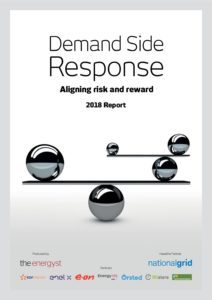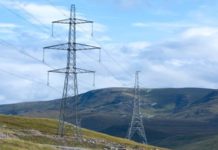
Head of smart grid development, Sotiris Georgiopoulos, says UK Power Networks has incorporated learning from last year’s inaugural flex tender into its procurement roadmap, published in August.
Customers with interruptible processes had indicated that they could provide response for relatively short times, but that hours on end may be challenging. Georgiopoulos says that is why its upcoming tenders, while looking for three-hour response durations, will give pro-rata payment for responses of at least 30 minutes.
Another piece of feedback was around lead times, says Georgiopoulos.
“Aggregators told us that they have a minimum six months recruitment period [to sign contracts or develop new sources of flexibility]. That is why we will tender six months and 18 months ahead of delivery. The 18 month cycle enables people to build new assets, the six month cycle allows those who have assets to participate, or to recruit existing flexibility within the locality.”
Pricing
While some market participants have urged DNOs to provide a better indication of the value they place on flexibility, Georgiopoulos says UKPN has to test the market and must be conscious of taking the most economic solution – whether DSR or network reinforcement.
However, UKPN’s roadmap provides an example that using flexibility services with an approximate cost of £30,000/year could help it defer a reinforcement cost of £2m for four years.
“That is an indicative example and will depend on value, location and specific circumstances – some sites have value higher, some lower. But we will signal the locations [where we have most need for flexibility ahead of the tenders] on the high voltage network,” says Georgiopoulos.
Committed to flex
“We have committed to test the market and the Flexibility Roadmap should give people confidence that this is not a one-off, which frankly, we would not invest the time and effort into,” he adds.
“We are also giving signals that we will look at flexibility at lower voltage levels, which nobody has yet looked into on a commercial basis. Personally, I think that is quite pioneering,” says Georgiopoulos.
“We are we are trying to make it attractive and provide some certainty and transparency so that participants can see how we value flex. But we need to learn by doing, so let’s crack on.”
Western Power Distribution: The lessons to date

WPD says the response to its flex tenders to date have been positive, with 121MW answering the expression of interest for the first trial, and 261MW to this summer’s first ‘business as usual’ procurement exercise.
However, the challenge lies in “converting that interest into operational megawatts,” admits WPD Innovation and Low Carbon Networks Engineer, Matt Watson.
Barriers
Watson says some providers were reluctant to commit resources to a trial, but he expects that to reduce as flexibility becomes business as usual across WPD’s network.
Understanding the potential value (i.e. how much they would get paid) was another barrier. WPD has since outlined what it will pay for three types of service, ranging from £75/MWh arming fees to £600/MWh utilisation fees, as well as reductions providers will incur for under delivery.
Watson says some providers, used to national services procured by the System Operator, did not fully grasp the specific locational nature of the flexibility it needed, which ended up in some offered flex being slightly outside of the areas in which it was required. He thinks that barrier will reduce as the market gets used to DNOs’ specific geographic needs.
Opportunities
Watson says WPD has committed to testing the market for all relevant reinforcement and will “open new zones on a fairly regular basis.” It has also signposted potential future requirements at: flexibilitymap.westernpower.co.uk.
Meanwhile, he says the DNO is designing its services to be ‘stackable’, so that providers can deliver services to WPD “for the limited times when we might need them and then continue to generate revenue from the wider markets”.
Reducing providers’ loss of opportunity costs, and giving them another revenue stream, he says, makes the rates WPD pays attractive while minimising costs to consumers.
Procurement platform
While some in industry moot the need for a common flexibility procurement platform, Watson thinks it is probably too early.
“There is a lot of talk about platforms at the moment, with limited consensus on what the expected functionality of these platforms would actually be,” he says.
“We see the merit of more consistent approaches to accessing the market and this is something that we are looking into as part of the Open Networks project. However, this needs to be balanced against the relative immaturity of the market as well as the benefits provided by multiple competitive platforms.”
 A version of this article was first published in the 2018 DSR report, which covers end user views on demand-side response, as well as those of industry. Download it here, free of charge.
A version of this article was first published in the 2018 DSR report, which covers end user views on demand-side response, as well as those of industry. Download it here, free of charge.
Related stories:
Aggregators: Upload your data to grow DNO flexibility markets
UKPN eyes 200MW of demand-side response, details new tenders
WPD to launch flexibility tenders across all networks in 2019
WPD rethinks DSR plans, relaunches Flexible Power platform
DNOs ‘no threat’ to suppliers and aggregators
UK Power Networks outlines smart grid plans
UK Power networks tenders for 35MW of DSR to go live January 2018
UKPN and WPD step up calls for industrial and commercial firms to provide flexibility
Free 2018 demand-side response report
Follow us at @EnergystMedia. For regular bulletins, sign up for the free newsletter.



